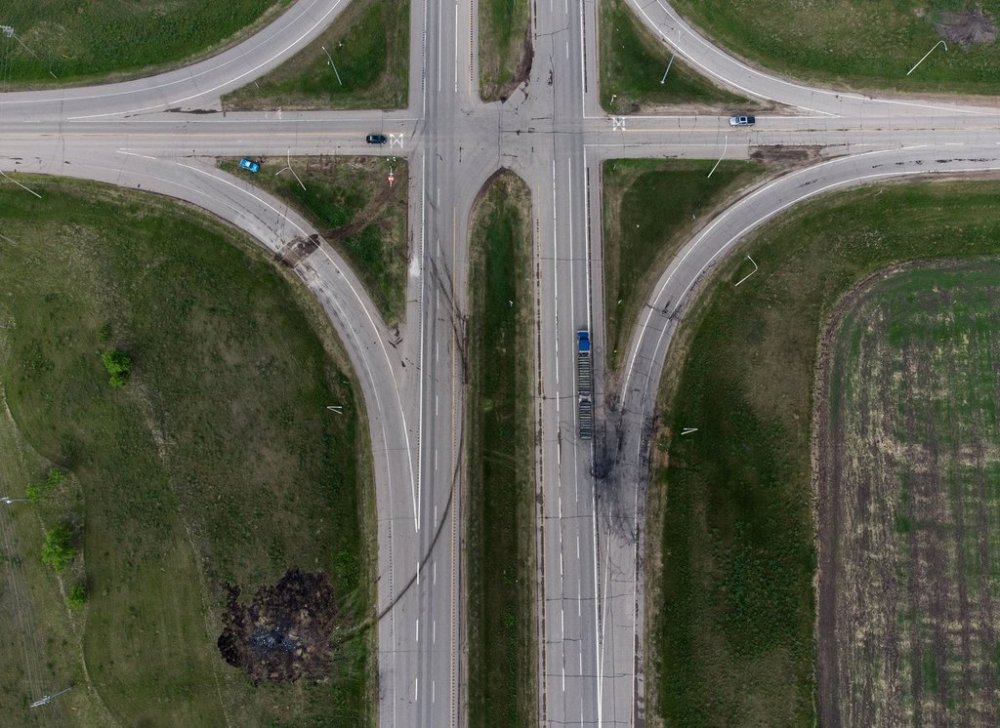Manitoba to rework plan to change intersection where deadly bus crash happened
Advertisement
Read this article for free:
or
Already have an account? Log in here »
To continue reading, please subscribe:
Monthly Digital Subscription
$0 for the first 4 weeks*
- Enjoy unlimited reading on winnipegfreepress.com
- Read the E-Edition, our digital replica newspaper
- Access News Break, our award-winning app
- Play interactive puzzles
*No charge for 4 weeks then price increases to the regular rate of $19.00 plus GST every four weeks. Offer available to new and qualified returning subscribers only. Cancel any time.
Monthly Digital Subscription
$4.75/week*
- Enjoy unlimited reading on winnipegfreepress.com
- Read the E-Edition, our digital replica newspaper
- Access News Break, our award-winning app
- Play interactive puzzles
*Billed as $19 plus GST every four weeks. Cancel any time.
To continue reading, please subscribe:
Add Free Press access to your Brandon Sun subscription for only an additional
$1 for the first 4 weeks*
*Your next subscription payment will increase by $1.00 and you will be charged $16.99 plus GST for four weeks. After four weeks, your payment will increase to $23.99 plus GST every four weeks.
Read unlimited articles for free today:
or
Already have an account? Log in here »
WINNIPEG – The Manitoba government backed away Wednesday from a proposed change to a highway intersection where 17 people were killed in a fiery bus crash.
The province won’t proceed with a plan to turn the intersection into an RCUT, or restricted crossing U-turn. The design was touted at a recent town hall in Carberry, and some 2,100 area residents signed a petition that denounced the idea.
“After hearing clearly from the community, our government will not proceed with the (RCUT) design at the intersection of Highway 1 and 5 near Carberry,” Premier Wab Kinew said in a written statement.

“While engineers identified it as a safe option, rural Manitobans told us it’s not the right fit. We’re listening, stepping back and developing a new approach that prioritizes safety and reflects local needs.”
In June 2023, a bus carrying 24 seniors from the Dauphin area, heading south on Highway 5, crossed into the path of an eastbound semi-trailer on the Trans-Canada Highway.
The truck had the right of way, and the bus driver had a yield sign. The collision caused the bus to catch fire and end up in a ditch. Some of the 17 who died were thrown from the vehicle.
The intersection currently allows traffic to flow freely on the Trans-Canada Highway, while vehicles on Highway 5 have a stop sign as they first arrive at the intersection, followed by a yield sign in the median.
The government floated several possibilities for a safer design, ranging from a roundabout to a wider median that would provide more space for trucks.
Two weeks ago, the Transportation Department, in conjunction with two firms hired to help weigh different options, said an RCUT would be the preferred option, as it reduces the number of points where vehicles travelling in different directions can collide.
The design allows traffic on the main highway to flow freely, while people on the side road are prevented from crossing directly or turning left. Instead, they must turn right, merge with traffic, execute a U-turn and merge again.
That did not sit well with some area residents at the town hall on the issue. Many said the required U-turn would not be safe for large trucks and farm equipment.
Carberry Mayor Ray Muirhead welcomed the province’s plan to reconsider.
“Premier Kinew requested that we allow them some time to … regroup and just see what options are out there,” he said.
Area residents continue to push for an overpass — a more expensive option, which the province had said was not warranted by traffic levels in the area 160 kilometres west of Winnipeg.
“We would like to see an overpass. It’s one of these things that if you’re going to do it, do it right the first time,” Muirhead said.
Kinew was not available for an interview and the government did not say whether an overpass might be back on the list of possibilities.
RCUTS are common in the United States but rarer in Canada. Transportation officials have said data from a RCUT intersection near Saskatoon has shown positive results.
This report by The Canadian Press was first published July 9, 2025.


